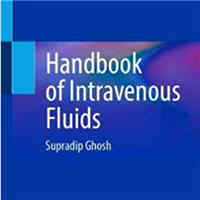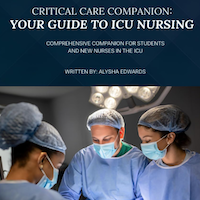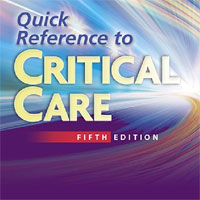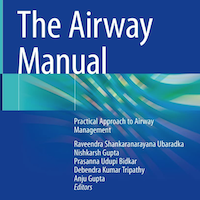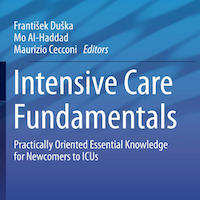
Procalcitonin Testing to Guide Antibiotic Therapy in Acute Upper and Lower Respiratory Tract Infections
Is the use of procalcitonin for guiding antibiotic decisions in patients with acute upper and lower respiratory tract infections associated with improved clinical outcomes compared with usual care? Among patients with varying... read more

Improving Survival Rates From Sepsis
Sepsis kills more Australians each year than breast cancer and prostate cancer combined. Daily, as many as 20,000 people worldwide are thought to die from this deadly disease. Also known as blood poisoning, sepsis is a life-threatening... read more

Simplifying Mechanical Ventilation
Mechanical Ventilation is a modality commonly used in the critically ill, but many providers, may not have a strong understanding of the basics. Emergency Medicine and Critical Care Physicians need to have a firm grasp of... read more

The Speed of Sound: A New Measure to Single Out High-Risk PE Patients
Predicting which pulmonary embolism patients will do well with oral anticoagulation and which will decompensate is a bit murky, at best. The treatment of pulmonary embolism (PE) has evolved quite a bit in just the past few... read more

Phage Treatment of an Aortic Graft Infected with Pseudomonas Aeruginosa
Another phage therapy success. Bacteria-killing Viruses found in a pond knocked out an antibiotic resistant infection. Management of prosthetic vascular graft infections caused by Pseudomonas aeruginosa can be a significant... read more

A Doctor Without Health Insurance? What Could Go Wrong?
It's probably nothing. That's what I said to myself not long ago when I started feeling lousy. I should know, since I'm a physician. But I learned the hard way that those "nothings" can get serious fast - and without health... read more

NHS ICUs Sending Patients Elsewhere Due to Lack of Beds
Six in ten UK ICUs cannot function normally because they are so short of nurses, a survey has found. Patients whose lives are at risk are being turned away from their local hospitals because of a lack of intensive care beds,... read more

Survival Benefit of a Low Ratio of Visceral to Subcutaneous Adipose Tissue Depends on LDL Clearance vs. Production in Sepsis
Patients with sepsis with a high ratio of visceral adipose tissue (VAT) to subcutaneous adipose tissue (SAT) have increased mortality. Our goal was to investigate the mechanism of this effect, noting that low LDL levels are... read more

Prehospital Antibiotics Improved Some Aspects of Sepsis Care
Training EMS personnel in early recognition of sepsis improved some aspects of care within the acute care chain, but did not reduce mortality, according to results of a randomized trial. Emergency medical service (EMS) personnel... read more
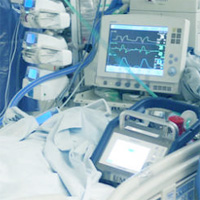
Hyperoxia and Hypocapnia During Pediatric ECMO
Hyperoxia is common during pediatric extracorporeal membrane oxygenation (ECMO) and associated with mortality. Hypocapnia appears to occur less often and although associated with complications, an association with mortality... read more

Pediatric Sepsis Endotypes Among Adults With Sepsis
Recent transcriptomic studies describe two subgroups of adults with sepsis differentiated by a sepsis response signature. The implied biology and related clinical associations are comparable with recently reported pediatric... read more

Outcomes in Patients with Vasodilatory Shock and RRT Treated with Intravenous Angiotensin II
Acute kidney injury (AKI) requiring renal replacement therapy in severe vasodilatory shock is associated with an unfavorable prognosis. Angiotensin II treatment may help these patients by potentially restoring renal function... read more
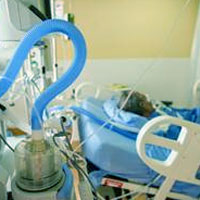
Lack of Association of High Backrest With Sacral Tissue Changes in Adults Receiving Mechanical Ventilation
Although higher backrest elevation may be a theoretical risk for integrity of sacral tissues, few data support use of high backrest elevation. Level of backrest elevation is not associated with changes in tissue integrity.... read more

The Inflammatory Response to ECMO
Extracorporeal membrane oxygenation (ECMO) is a technology capable of providing short-term mechanical support to the heart, lungs or both. Over the last decade, the number of centres offering ECMO has grown rapidly. At the... read more
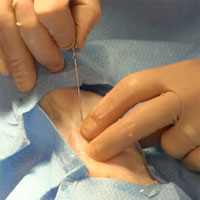
Arterial Line Placement
Approximately eight million arterial lines are placed in the United States yearly. The main indication for arterial line placement is the need for close hemodynamic monitoring. The second-to-second blood pressure variations... read more

Critical Burn Patients in the ED/ICU
Dr. Djogovic completed training in Emergency Medicine and Critical Care Medicine from 1999-2005, and is currently employed at the University of Alberta Hospital as an Emergency Physician, and as an Intensivist in the General... read more

Noninvasive Ventilation in Patients With Do-Not-Intubate and Comfort-Measures-Only Orders
A large proportion of patients with do-not-intubate orders who received noninvasive ventilation survived to hospital discharge and at 1 year, with limited data showing no decrease in quality of life in survivors. Provision... read more


